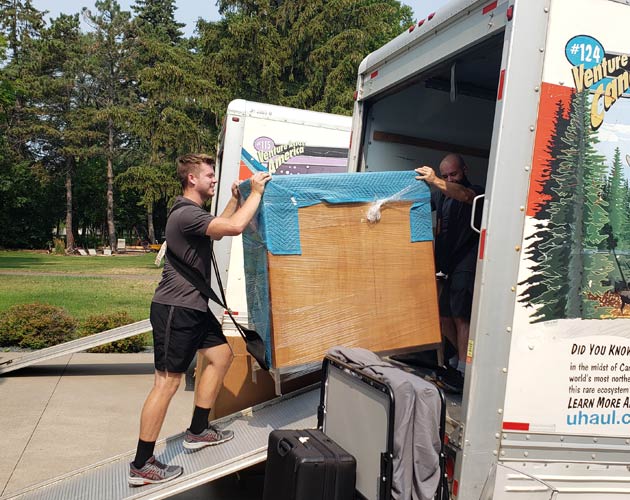Is moving to the twin city on your bucket list this year or sooner? Are you worried about how the move would take place because you don’t have a family there, and you don’t know how things will pan out for you? Relax! Here is the most helpful twin city moving guide if any one of the twin cities, Minneapolis or St. Paul, is beckoning out to you!
Minnesota never fails to excite:
Between the Twin Cities, Minnesota is more urbanized. It is even referred to as the Mini Apple comparing its size and culture to New York. The city is best for businesses and startups by bright professionals, and it has a whooping 17 multinationals that have set up their base here, promising great employment opportunities to its residents.
Help at hand:
No doubt, moving to Minneapolis can become a daunting task. But we are here for you. This guide is filled with all the information you will ever need if Minnesota is your next destination. We have double-checked all the information contained in this guide to be true and helpful.
Minneapolis has a lot of neighborhoods. Its downtown area runs diagonally with River Mississippi. The southwestern region is what makes up most of the city. The population of Minneapolis is and around 400,000 rankings it to be the 46th most populated city in the US. The cost of living is quite high in the twin city because it ranks 15th on the expensive city indices.
Rent:
The city center has a wide range of homes for smaller families and young professionals. But they are usually higher priced than those in the suburban neighborhoods. If you like to be in the center of action all the time, then you may have to cough up higher rent in the range of $1500 and $2500 per month in the up market neighborhoods of
– Loring Park
– Downtown Minnesota
– The North Loop and
– East Calhoun
For those that are on a shoestring budget or college students, or young professionals that have just graduated, you may be lucky to find a decent stay in neighborhoods such as
– Lyndale
– Elliot Park
– Hawthorne and
– Ventura
The average rent per month in the above four neighborhoods would be between $800 and $1250.
The medium-range neighborhoods are
– Lowry Hill
– Western Calhoun
– The University District and
– The Cedar-Riverside
The rent here falls between $1250 and $1500 per month.
Pro-tips to renting a house:
– Give Craigslist a go for cheap apartments
– Research well before you rent out a place
Minneapolis is a seller’s market, so engage a local real estate agent for negotiations.
When trying to choose your neighborhood, there are two things you must keep in mind:
- Fitting in with neighbors
- Staying closer to work
Minneapolis has a great commuting network in place. It is an excellent place to walk, bike, and trail. More than 95 percent of the population here owns one car because it gets difficult to get around in winter with layers of snow. The city’s large size is also another reason that most Minneapolis workers drive to work. The Minneapolis Metro Transit is also very popular amongst its citizens.
Safety quotient:
Minneapolis is ranked relatively low on the crime rate chart, but it is due to the high number of incidents vis a vis its huge demographics. The high crime rate does not mean there is imminent danger to life and property. Most residents consider it to be a safe place. But there are certain precautions that you will need to take in order to ensure your safety.
- Do not give out your data like social security numbers, address, or phone numbers to any stranger or someone that looks suspicious to you.
- Make sure that you reach out to the emergency numbers in case you find something amiss in the neighborhood.
- Use a safety bolt from the inside. Ensure that you change all the old locks in the house because you don’t know who had rented the home before you.
Weather inclement conditions:
When moving to Minnesota, do not compromise on the heating system in your new home because you are bound to experience a minimum of five months of freezing cold. Also, make sure that you determine the estimated monthly cost of living based on the weather conditions of the neighborhood you are choosing. You will need a washer and dryer inside your home in case you don’t want to strut around looking for a Laundromat in your snow.
Moving into Minneapolis:
You could hire a moving company or rent a moving truck. Hiring the movers is an easy option but choose wisely after considering their long-distance prices depending on what you require moving and to where.
Make sure that you get the best price from your twin city movers along with checking with your apartment about loading dock reservations.
If moving in winter is urgent, make sure that you are winter-prepared with warm and comfortable clothing, snowshoes, shovels, and other tools. The best time to move to the twin city is from June to August. April and May are good months too.
The final word:
Minnesota has been continuously ranked very high for being the best place to raise families. In 2020, Minnesota was ranked third happiest state in the nation and placed third as the happiest healthiest city. The place is great for anyone looking for social and economic wellbeing coupled with excellent health care policies.



